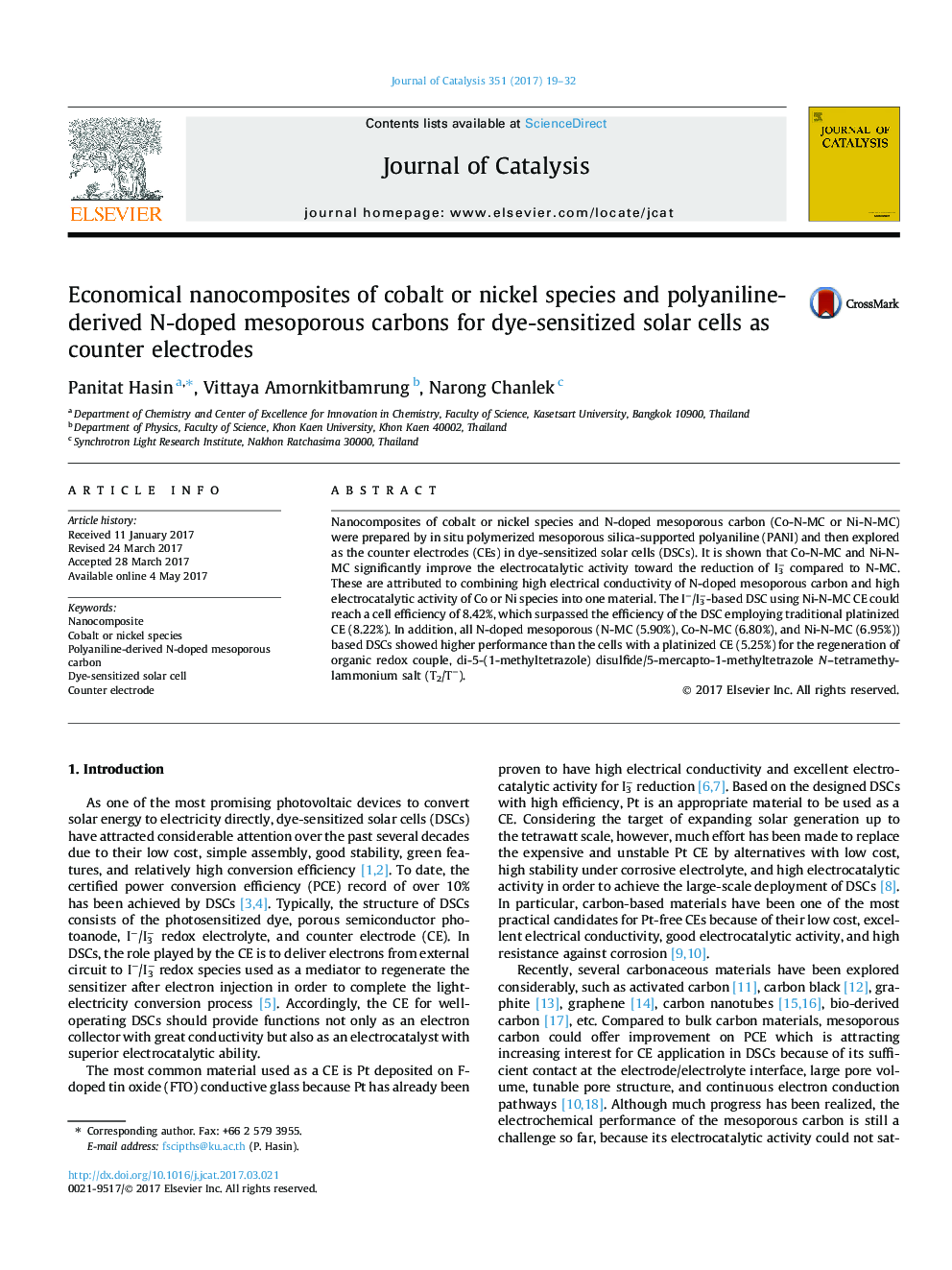| Article ID | Journal | Published Year | Pages | File Type |
|---|---|---|---|---|
| 4757442 | Journal of Catalysis | 2017 | 14 Pages |
â¢Co or Ni-N-MC is the first alternate design for CE electrocatalyst of DSCs.â¢An attempt to couple the CE electrocatalysts and the redox couples is considered.â¢Co or Ni-N-MC with high surface area shows excellent electrocatalytic activity.â¢DSC with Ni-N-MC CE shows a high efficiency of 8.42% in Iâ/I3â solution.â¢DSC with Ni-N-MC CE shows a high efficiency of 6.95% in T2/Tâ solution.
Nanocomposites of cobalt or nickel species and N-doped mesoporous carbon (Co-N-MC or Ni-N-MC) were prepared by in situ polymerized mesoporous silica-supported polyaniline (PANI) and then explored as the counter electrodes (CEs) in dye-sensitized solar cells (DSCs). It is shown that Co-N-MC and Ni-N-MC significantly improve the electrocatalytic activity toward the reduction of I3â compared to N-MC. These are attributed to combining high electrical conductivity of N-doped mesoporous carbon and high electrocatalytic activity of Co or Ni species into one material. The Iâ/I3â-based DSC using Ni-N-MC CE could reach a cell efficiency of 8.42%, which surpassed the efficiency of the DSC employing traditional platinized CE (8.22%). In addition, all N-doped mesoporous (N-MC (5.90%), Co-N-MC (6.80%), and Ni-N-MC (6.95%)) based DSCs showed higher performance than the cells with a platinized CE (5.25%) for the regeneration of organic redox couple, di-5-(1-methyltetrazole) disulfide/5-mercapto-1-methyltetrazole N-tetramethylammonium salt (T2/Tâ).
Graphical abstractDownload high-res image (104KB)Download full-size image
